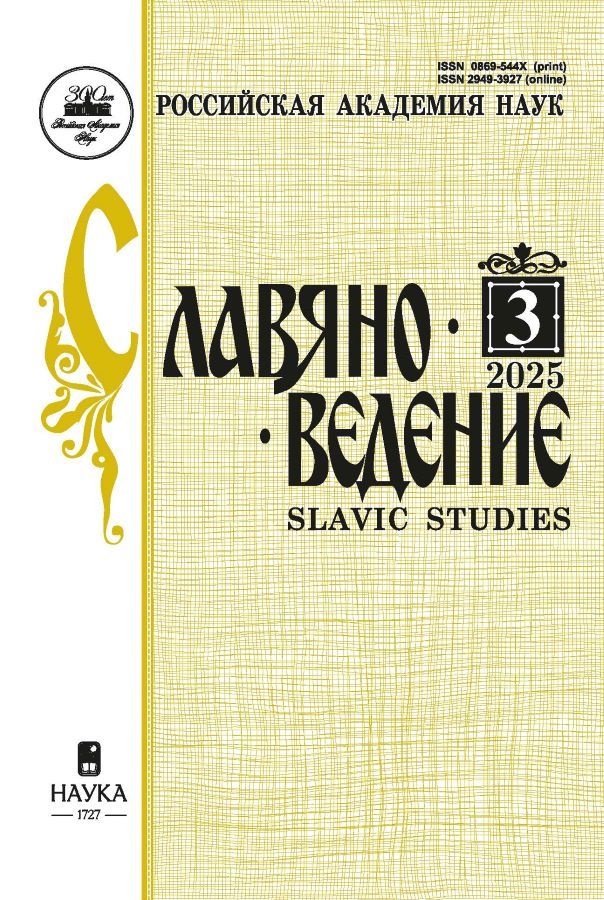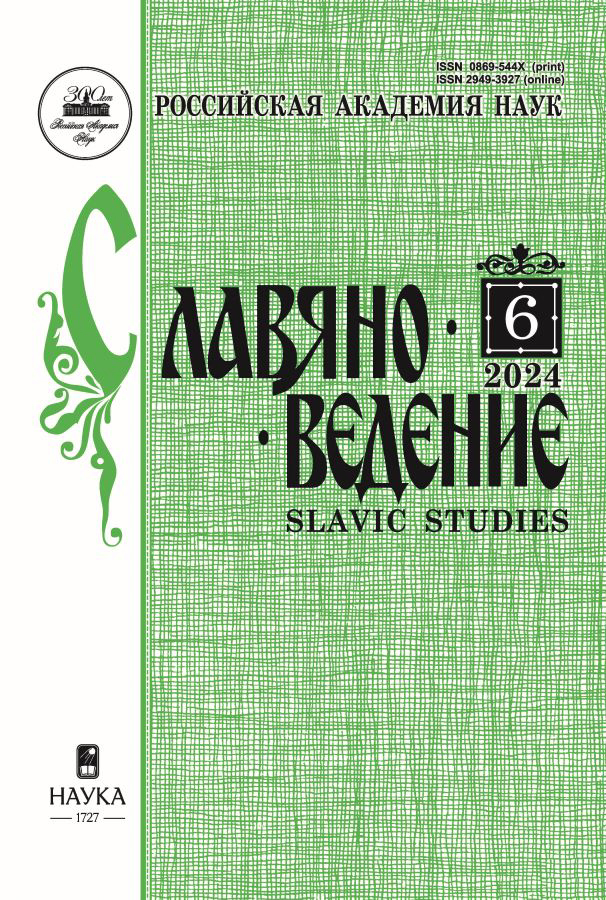Jewish religious building in the Russian Empire: problems of terminology
- Authors: Padalko S.S.1,2
-
Affiliations:
- Institute of Slavic Studies of the Russian Academy of Sciences
- St. Petersburg State University
- Issue: No 6 (2024)
- Pages: 61-74
- Section: Articles
- URL: https://rjmseer.com/0869-544X/article/view/652924
- DOI: https://doi.org/10.31857/S0869544X24060058
- EDN: https://elibrary.ru/XGUSFJ
- ID: 652924
Cite item
Abstract
The article examines the practice of synagogue architecture through the lens of I. Hoffman's framework. Special attention is paid to the problem of avoiding the use of the terms «synagogue» and «prayer school» adopted in legislation in correspondence with communities. The article is divided into three semantic blocks, the first one examines in detail the mechanism for obtaining permission for temporary prayer halls and permanent religious buildings. The second is devoted to the analysis of terms used in the legislation for Jews of the line and outside it. In the third, with the help of frame analysis, bureaucratic language is analyzed as a ceremonial procedure requiring compliance with the rules of correspondence by both sides. It is concluded that outside of correspondence, the rule of avoiding terms did not work. The article is based on historical sources related to the Jewish community in the Volga Region.
Keywords
About the authors
Semyon S. Padalko
Institute of Slavic Studies of the Russian Academy of Sciences; St. Petersburg State University
Author for correspondence.
Email: semenpadalko14@gmail.com
ORCID iD: 0000-0002-9491-5003
master of anthropology and ethnology, project executor, Postgraduate Student
Russian Federation, Moscow; St. Petersburg State UniversityReferences
- Coenen-Snyder S. Building a Public Judaism: Synagogues and Jewish Identity in Nineteenth-Century Europe. Cambridge, Harvard University Press Publ., 2013, 350 p.
- Goffman E. Frame analyses an essay on The organization of experience. Boston, Northeastern University Press Publ., 1986, 600 p.
- Jegorov V.V. Nizhegorodskaia jevreiskaia obshchina v kontekste politiki rossiiskogo samoderzhaviia po jevreiskomu voprosu (mart 1855 – ianvar’ 1917 gg.): Diss. kand. ist. Nauk. Nizhegorodskii gos. un-t. im. N.I. Lobachevskogo. Nizhnii Novgorod, 2019, 241 p. (In Russ.)
- Jevreiskaia entsiklopediia, pod red. L. Katsenel’sona. St. Petersburg, Izd. Brokgauza-Jefrona Publ., 1913, no. 14, 952p. (In Russ.)
- Kliainmann I. Novyje mesta – Novyje liudi. Jevreiskaia zhizn’ v Sankt-Peterburg i Moskve v XIX v. Moscow, Knizhniki Publ., 2019, 486 p. (In Russ.)
- Krinsky С.H. Synagogues of Europe: Architecture, History, Meaning. Mineola; New York, Dover publications INC Publ., 1996, 480 p.
- Levin V. The Legal History of Synagogues of Nohynia. Synagogues in Ukraine Nohynia. Jerusalem, The Center for Jewish Art, The Hebrew University of Jerusalem, 2017, pp. 21–57.
- Levin V., Berezin A. Jewish Prayer in the Heart of Russia: Synagogues along the Noga River. Ars Judaica: The Bar-Ilan Journal of Jewish Art. 2022, no. 8, pp. 111–144.
- Levitac I. Evrejskaya obshchina v Rossii (1772–1917). Moscow, Knizhniki Publ., 2013, 656 p. (In Russ.)
- Nathans B. Beyond the Pale: The Jewish Encounter with Late Imperial Russia. Berkeley, University of California press Publ., 2002. 424 p.
- Nugmanova G.G. Arkhitekturno-stroitel’noje zakonodatel’stvo Rossiiskoi imperii i khramy inovercheskikh i nepravoslavnykh khristianskikh ispovedanii v Kazani. Regional’noje mnogoobrazije arkhitektury v Rossii. Kazan’, Pluton Publ., 2007, pp. 172–208. (In Russ.)
- Pudalov B.M. Jevrei v Nizhnem Novgorode. XIX – nachalo XX veka. Nizhnii Novgorod, Nizhegorodskii gumanitarnyi tsentr Publ., 1998, 164 p. (In Russ.)
- Reiner E. Bet ha-Midrash. The YIVO Encyclopedia of Jews in Eastern Europe.
- New Haven, Yale University Press, 2008, Vol. 1, 2400 p.
- Sapir M.S. Istoriia otkrytiia v g. Iaroslavle postoiannoi molel’ni kak primer vzaimootnoshenii jevreiskoi obshchiny s gubernskimi vlastiami na rubezhe XIX–XX vv. Innovatsionnaia nauka, 2017, pp. 64–67. (In Russ.)
- Synagogues in Lithuania: a Catalogue, eds. Aliza Cohen-Mushlin, Sergey Kravtsov, Vladimir Levin. Vilnius, Vilnius Academy of Art Press Publ., 2010, no. 1, 336 p.
Supplementary files











